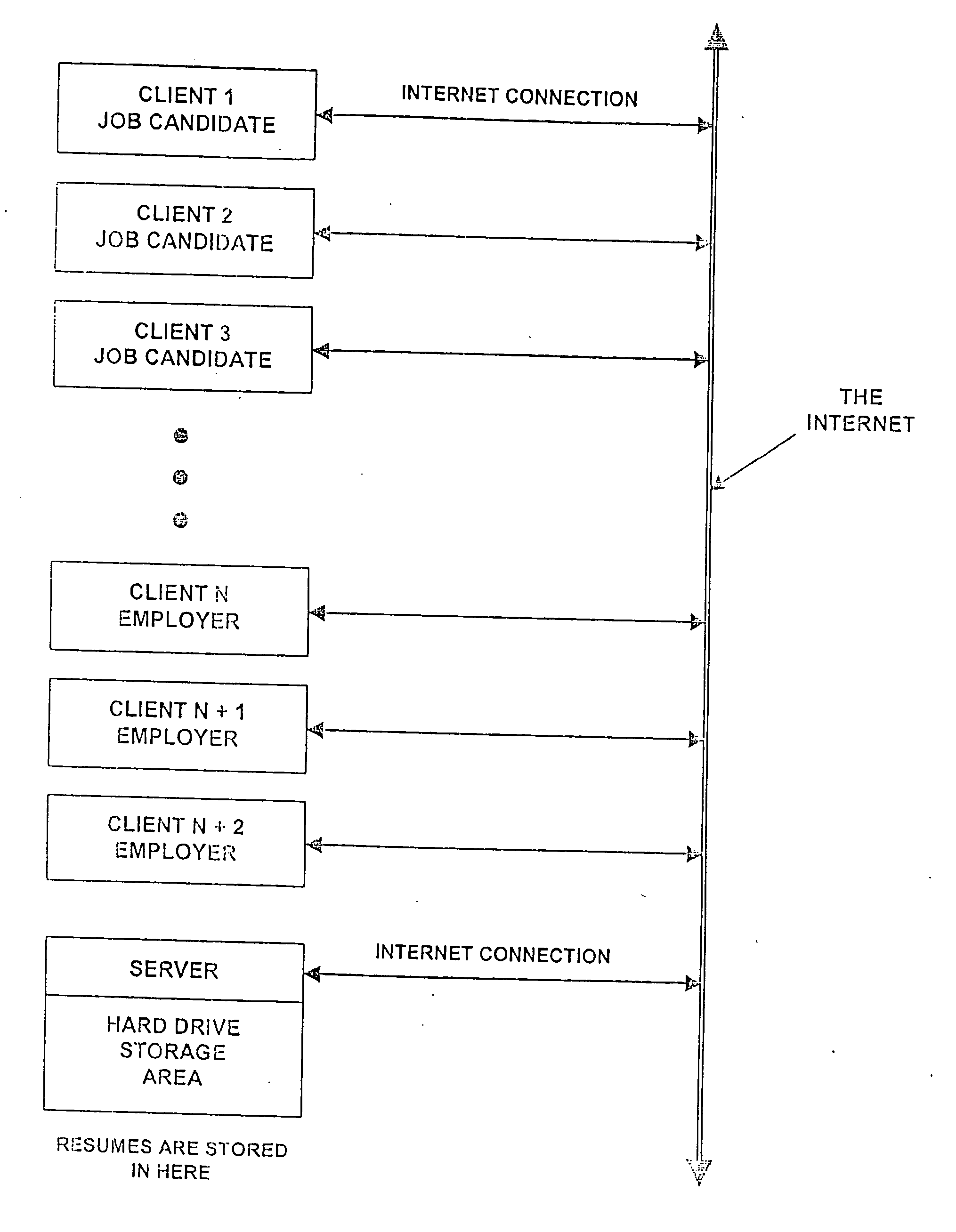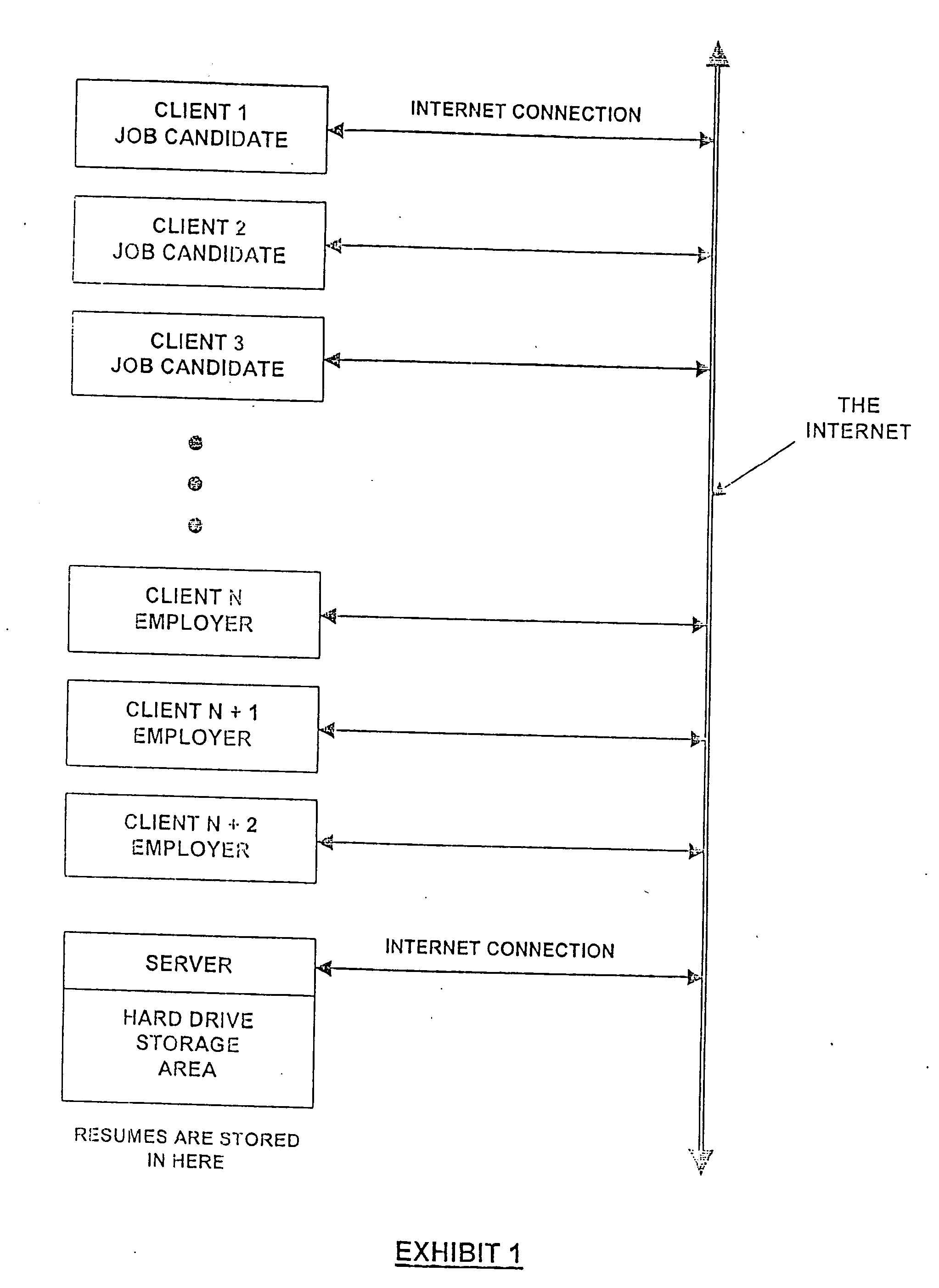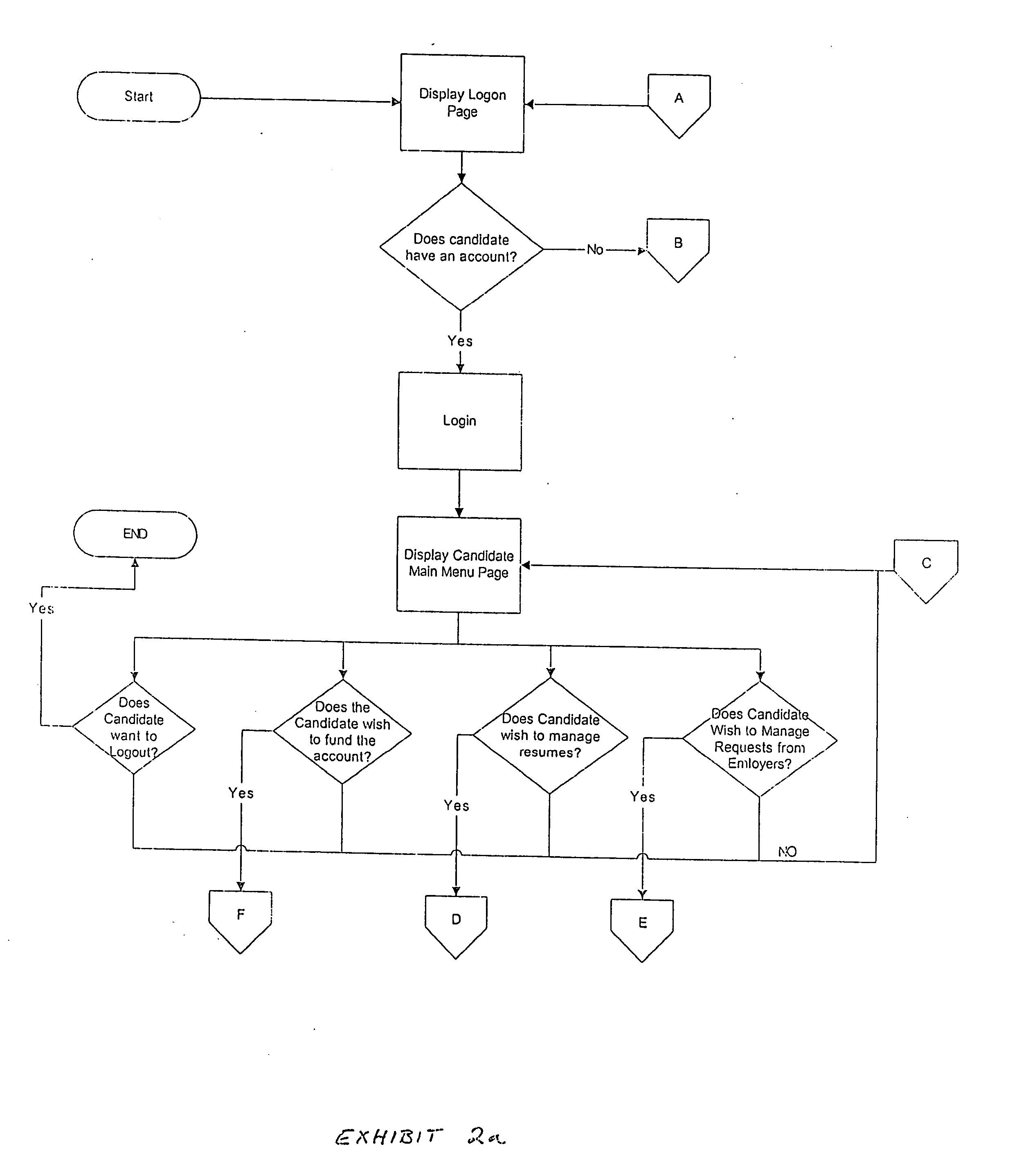Method of displaying resume over the internet in a secure manner
a resume and secure technology, applied in the field of internet commerce, can solve the problems of not being able to go directly from a text file to a graphics file within most industry-standard word processing programs, prior art has not realized its full potential, and the requirement of converting it to a graphics file can become a burden for someone who does not have access
- Summary
- Abstract
- Description
- Claims
- Application Information
AI Technical Summary
Benefits of technology
Problems solved by technology
Method used
Image
Examples
Embodiment Construction
[0044] The best way to describe how the invention remedies the issues described above is to divide the functionalities of the site into two perspectives: the Job Candidate's Perspective, and the Employer's Perspective.
1.0 Job Candidate's Perspective
[0045] 1.1 Account Creation [0046] The first task that the job candidate must complete is to create an account. This is necessary to prevent frivolous or fraudulent resumes from being submitted. The account creation process requires the candidate to enter in some basic information like username, password, email address, as well as some demographic information such as the candidate's zip code, the regions in which he wishes to find employment, and a choice regarding relocation options. If the job candidate desires, the account can be anonymous as we have no need or desire to know his / her identity to make the web site functional. [0047] More specifically, the candidate is presented with a list (or drop-down menu) of geographical regions ...
PUM
 Login to View More
Login to View More Abstract
Description
Claims
Application Information
 Login to View More
Login to View More - R&D
- Intellectual Property
- Life Sciences
- Materials
- Tech Scout
- Unparalleled Data Quality
- Higher Quality Content
- 60% Fewer Hallucinations
Browse by: Latest US Patents, China's latest patents, Technical Efficacy Thesaurus, Application Domain, Technology Topic, Popular Technical Reports.
© 2025 PatSnap. All rights reserved.Legal|Privacy policy|Modern Slavery Act Transparency Statement|Sitemap|About US| Contact US: help@patsnap.com



